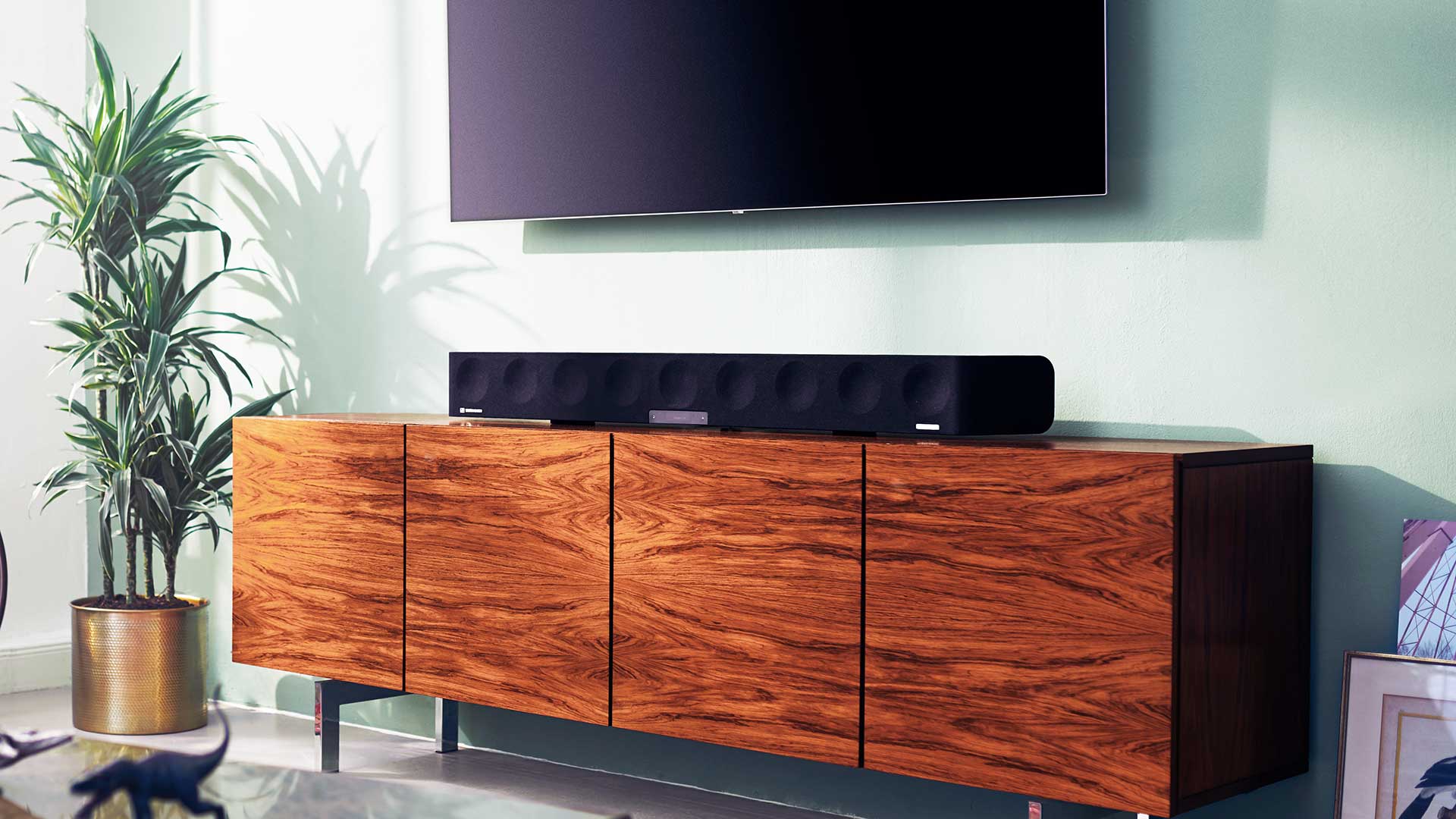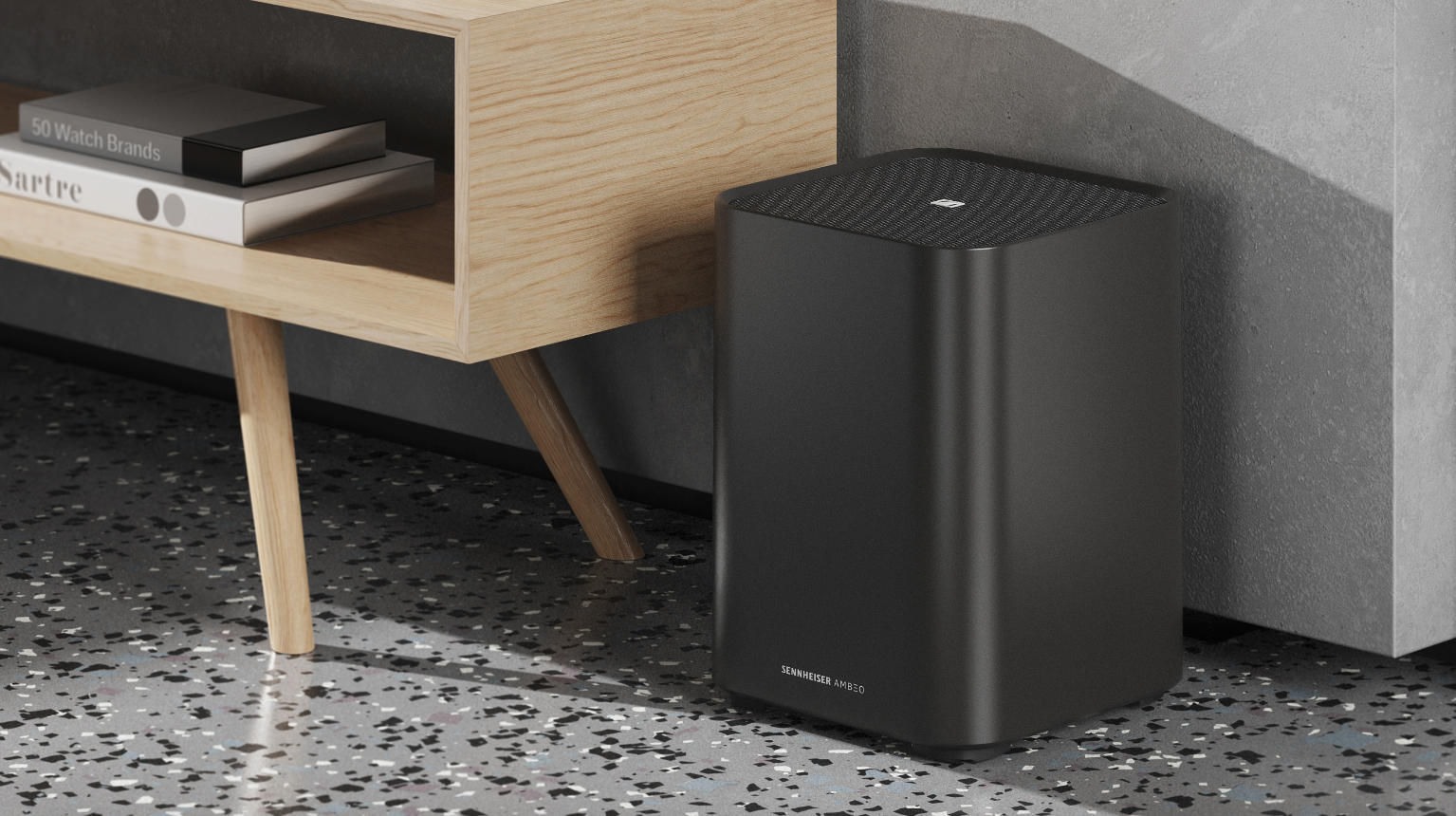Sennheiser's Ambeo Max soundbar holds up four years on, but one thing still prevents perfection
The Max is missing something – and not just a Mini sibling

With the rate at which consumer technology products are churned out, not to mention the competition involved in most corners of the market, it isn’t all that surprising how few manage to stay at the top of the game for years on end. Special products do, of course, come along and reign supreme for longer than Presidential terms, and among them is the Sennheiser Ambeo, which has dominated the premium Dolby Atmos soundbar market since its arrival in mid-2019 (first as the ‘Ambeo’ and now as the renamed ‘Ambeo Max’).
That’s a credit to Sennheiser’s ambition and delivery, and also somewhat down to the fact that the £2199 / $24995 / AU$2995 Ambeo hasn’t faced much competition at all in such a lofty segment of the soundbar market in which it predominantly occupies. The bottom line: it rocked in 2019 and, more than four years later, still rocks today. Which is why I’m surprised Sennheiser hasn’t yet taken what for me is the next step: to produce dedicated wireless rear surround speakers.
Recent leaks suggest that the next member to join the Sennheiser Ambeo family is a smaller, more affordable Ambeo Mini, and I’m glad – it’s a product we have longed for for years and, if the leaked pricing is to be believed, could finally shake up the market segment conquered by the Sony HT-A7000 and Sonos Arc. But I hope the Ambeo team has surround speakers next on its launch list, not least as it made a move towards a fuller surround system last year by introducing the Ambeo Sub.
The surround system vision
The rear speakers I envision would wirelessly connect to the Ambeo to make up a fully fledged (but still compact and convenient, relative to a speaker package) surround system. They would be decently sized – none of these tiny satellite speakers you see packaged into all-in-one soundbar bundles, bless their two-inch drivers – and naturally have upward-firing units, like the bar, to take over some of the overhead delivery inherent in Dolby Atmos and DTS:X soundtracks and also offered via ‘upmixed’ audio processing. I’m picturing something like the Monolith by Monoprice THX-265B – only smaller and, in Ambeo fashion, curvier. OK, Sonos Era 300 rip-offs then. Yep, that’d be nice.

These rears would naturally do the heavy lifting when it comes to delivering a soundtrack’s surround (behind you) effects, leaving the bar’s 13 drivers to predominantly concentrate on the front and centre channels. Because while the Ambeo Max is the biggest-sounding and most immersive single-bar soundbar solution we’ve heard, it isn’t magic; no matter how sophisticated the bar’s processing, nothing can virtually place sound across the other side of a room as effectively as physical units can. As we said in our Sennheiser Ambeo Max review, the soundbar’s delivery “stretches into the room, up to the ceiling and on either side of the listening position” but it’s “not the same as having direct surround speakers”. Expanding the scale and precision of that soundfield physically would really move the Ambeo towards true home cinema surround sound, as opposed to being what it is now: a really great soundbar but ultimately the best example of an inherently compromised product type.
Customisation of the whole configuration – say, how the sound is attributed and weighted through which units, and a room calibration process – via Sennheiser's Smart Control App would no doubt come in handy too.

How much is too much for a soundbar system?
I know what you’re thinking: this doesn’t sound cheap. And you’d be right, a full Ambeo system almost certainly won’t be. The Ambeo Max, Sub and a pair of surrounds would, I’m guessing, cost at least £3400 / $3800 / AU$5700 together based on an estimated surround speaker price of around £300 / $350 / AU$600 each.
The latest hi-fi, home cinema and tech news, reviews, buying advice and deals, direct to your inbox.
For that, you can bag many of the 5.1 speaker packages in our best home theatre speaker systems buying guide that offer unquestionably higher perceived value and in many cases a larger scale, more sonically sophisticated sound – though rarely the Dolby Atmos skills and certainly not the convenience of wirelessness and compactness. And we know how much convenience costs these days! Comparing the two products feels a bit like comparing TVs with projectors, which share a purpose but are pretty different beasts and attract pretty different customers.
Would it, in its own right, be worth such money? For someone who wants a premium immersive home cinema without the faff and bulk of a traditional speaker package, who can afford to go beyond Sonos Arc/Era 300/Sub level, I’d be hopeful, based on the high-calibre performance of the Ambeo Max (and the Ambeo Plus) as well as presumably the lengthy time Sennheiser has taken to develop and launch such an accessory. And hey, it's only an option. I would imagine most Ambeo Max buyers would see surrounds and even the external subwoofer as a future upgrade path.
I hope I’m not a million miles away here, because such a complete, modern outfit could do nothing short of refashioning (semi-)serious home cinema, while making the Ambeo soundbar an even more appealing proposition for both new and existing owners.
MORE:
The future of OLED TVs is being decided as we speak – here’s why
IFA 2023 news: dates, brands and what we can expect from Europe's biggest tech show
The first 32-inch OLED is exactly what I want, but I'm not buying it

Becky is a hi-fi, AV and technology journalist, formerly the Managing Editor at What Hi-Fi? and Editor of Australian Hi-Fi and Audio Esoterica magazines. With over twelve years of journalism experience in the hi-fi industry, she has reviewed all manner of audio gear, from budget amplifiers to high-end speakers, and particularly specialises in headphones and head-fi devices.
In her spare time, Becky can often be found running, watching Liverpool FC and horror movies, and hunting for gluten-free cake.
